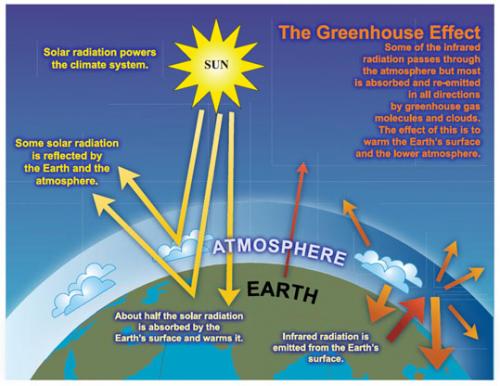The Carbon Cycle
Nature prefers balance. Humans have systems in place to maintain balance, or homeostasis, to keep us healthy and feeling well. For example, when we become too hot we sweat to cool off. When too cold, we shiver to generate heat. Thirst is our signal to drink to rehydrate cells. Working together, our body systems stay in sync to keep us functioning at an optimal level.
Earth has systems in place to maintain balance in the environment and keep the planet inhabitable. The water cycle is one example. Water moves through states of evaporation, condensation, and precipitation. Even when precipitation is low, such as the current drought in many areas, water is still present on Earth.
The carbon cycle regulates the amount of naturally occurring carbon on Earth. A short term carbon cycle occurs with respiration and photosynthesis. Plainly stated, mammals breathe in oxygen and breathe out carbon dioxide (CO2). Plants use CO2, water, and sunlight to create glucose and oxygen.

Other naturally occurring carbon sources include carbon from forest fires, decayed plants and animals, and volcanos. All release carbon into the atmosphere in the from of carbon dioxide. The tundra is a large carbon reservoir, and is releasing CO2 as permafrost thaws.
The amount of carbon dioxide in the atmosphere is regulated by the carbon cycle. When in balance, the amount of carbon dioxide released is equal to the amount of CO2 absorbed by carbon sinks.
Carbon sinks, or storage areas, include the oceans, vegetation (forests and plants) and the atmosphere.
In the ocean, carbon dioxide is absorbed by phytoplankton. Other CO2 is dissolved in water, creating carbonic acid. As a result of high absorption of CO2, oceans have become more acidic, impacting corals and shellfish.
You can perform a test to show the impact of acid on seashells. Use a dropper and place vinegar or another mild acid onto a seashell. Let the shell sit overnight. Make observations the next day. Based on your results, what do you think is happening to the shells of ocean creatures?
On land, plants absorb carbon through photosynthesis, as described above.
The atmosphere traps and stores carbon dioxide. CO2 is a greenhouse gas, along with methane, nitrous oxide and water vapor. Greenhouse gasses trap heat from the sun, providing warmth for our planet. Without these gasses, Earth would be too cold for life as we know it.

The ocean, land, and atmosphere work together in the carbon cycle to maintain a balance of carbon dioxide. Ideally, carbon absorption equals carbon production.
This carbon balance has been upset by increased burning of fossil fuels. Coal and natural gas, used to create electricity, and petroleum products fueling vehicles add CO2 to the air. Because these products are produced by people, they are considered anthropogenic sources. This CO2 is added at a rate that is faster than what can be absorbed through the carbon cycle, and the excess gas is building up in the atmosphere. As a result, more heat is trapped, leading to increased average global surface and ocean temperatures.
Scientists at Toolik Field Station study release of carbon from the tundra into the water systems, and are finding out what enhances CO2 production.
For more information about the carbon cycle, vist [carbon cycle] (http://www.ck12.org/book/CK-12-Earth-Science-For-High-School/r2/section/18.2/)


Comments